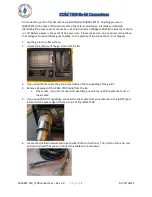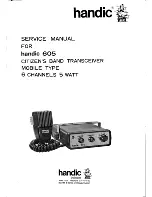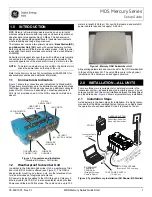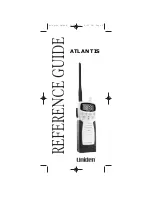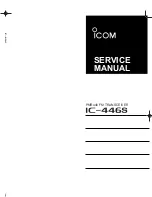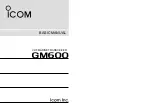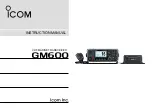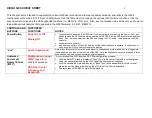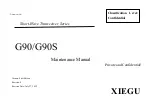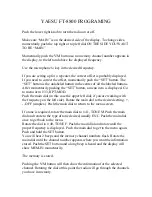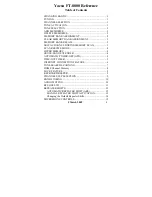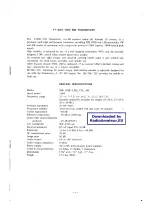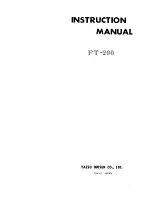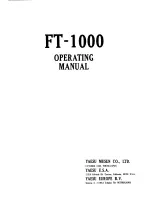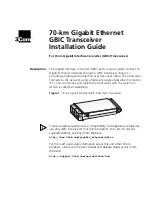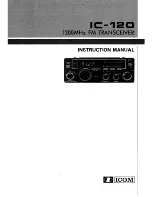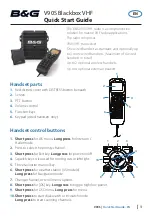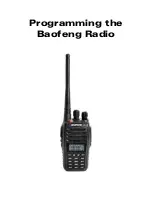
Manufacturer reserves the right to discontinue, or change at any time, specifications or designs without notice and without incurring obligations.
PC 111
Catalog No. 533-378
Printed in U.S.A.
Form 33CN-1SI
Pg 1
4-01
Replaces: New
Book 1
4
Tab
11a 13a
Installation, Start-Up and Service
Instructions
Part Numbers 33CNWIRMOD, 33CNSNGMOD, 33CNOAANT1
CONTENTS
Page
GENERAL
. . . . . . . . . . . . . . . . . . . . . . . . . . . . . . . . . . . . . . . . . . . . . 1
Frequency Hopping
. . . . . . . . . . . . . . . . . . . . . . . . . . . . . . . . . . . . 1
Transmit Power Control
. . . . . . . . . . . . . . . . . . . . . . . . . . . . . . . . 1
Security
. . . . . . . . . . . . . . . . . . . . . . . . . . . . . . . . . . . . . . . . . . . . . . . 1
PREINSTALLATION
. . . . . . . . . . . . . . . . . . . . . . . . . . . . . . . . . . . . 2
Site Evaluation Testing — Loopback Test
. . . . . . . . . . . . . . 2
INSTALLATION
. . . . . . . . . . . . . . . . . . . . . . . . . . . . . . . . . . . . . . . 2-4
Hardware Installation
. . . . . . . . . . . . . . . . . . . . . . . . . . . . . . . . . . 2
Serial Communications
. . . . . . . . . . . . . . . . . . . . . . . . . . . . . . . . 3
Software Installation
. . . . . . . . . . . . . . . . . . . . . . . . . . . . . . . . . . . 3
Antenna Selection and Location
. . . . . . . . . . . . . . . . . . . . . . . 3
Antenna Installation
. . . . . . . . . . . . . . . . . . . . . . . . . . . . . . . . . . . 4
Installation onto a CCN Bus
. . . . . . . . . . . . . . . . . . . . . . . . . . . 4
NETWORK TOPOLOGY
. . . . . . . . . . . . . . . . . . . . . . . . . . . . . . 4-6
Networks
. . . . . . . . . . . . . . . . . . . . . . . . . . . . . . . . . . . . . . . . . . . . . . 4
TYPICAL SET UP (QUICK START)
. . . . . . . . . . . . . . . . . . . . . 6,7
Quick Configuration
. . . . . . . . . . . . . . . . . . . . . . . . . . . . . . . . . . . 6
Broadcast Remote-to-All
. . . . . . . . . . . . . . . . . . . . . . . . . . . . . . . 6
ADVANCED CONFIGURATION
. . . . . . . . . . . . . . . . . . . . . . 7-13
Getting Status
. . . . . . . . . . . . . . . . . . . . . . . . . . . . . . . . . . . . . . . . . 7
Exiting the Program
. . . . . . . . . . . . . . . . . . . . . . . . . . . . . . . . . . . 7
Modifying Settings
. . . . . . . . . . . . . . . . . . . . . . . . . . . . . . . . . . . . . 8
Generating Reports
. . . . . . . . . . . . . . . . . . . . . . . . . . . . . . . . . . . . 9
Serial Settings
. . . . . . . . . . . . . . . . . . . . . . . . . . . . . . . . . . . . . . . . . 9
Power Management
. . . . . . . . . . . . . . . . . . . . . . . . . . . . . . . . . . . . 9
Passwords and Access
. . . . . . . . . . . . . . . . . . . . . . . . . . . . . . . . 9
Using Hop Tables
. . . . . . . . . . . . . . . . . . . . . . . . . . . . . . . . . . . . . 10
Assigning IDS
. . . . . . . . . . . . . . . . . . . . . . . . . . . . . . . . . . . . . . . . 11
Signal Analysis
. . . . . . . . . . . . . . . . . . . . . . . . . . . . . . . . . . . . . . . 11
Unit Testing
. . . . . . . . . . . . . . . . . . . . . . . . . . . . . . . . . . . . . . . . . . . 11
TROUBLESHOOTING
. . . . . . . . . . . . . . . . . . . . . . . . . . . . . . . 14,15
System Configuration
. . . . . . . . . . . . . . . . . . . . . . . . . . . . . . . . 14
Frequently Asked Questions (FAQs)
. . . . . . . . . . . . . . . . . . 14
GENERAL
The Carrier wireless transceivers enable connection to the
Carrier Comfort Network (CCN) in areas where standard wir-
ing cannot be used. The wireless transceiver can be plugged
into any standard serial port (RS-232 or RS-485) on a wide
variety of devices to provide CCN communications.
Wireless bus extension is only recommended if there are
no CCN secondary busses. Wireless extension of secondary
busses is not recommended.
The wireless transceiver operates in the license-free portion
of the FCC designated ISM (industrial, scientific, and medical)
frequency band at 2.4 GHz. It is ideal for transmissions over
long distances: up to 1500 ft indoors and line-of-sight to the
horizon outdoors. Data is transmitted reliably and securely
with wireless communications which enable service-interface
mobility.
The wireless transceivers operate in point-to-point pairs and
broadcast networks.
Two wireless transceiver kits are available from Carrier.
The 33CNWIRMOD kit contains the following: 2 wireless
transceivers, 2 power supplies, 2 RS-232 to RS-485 converters,
2 RS-232 cables, Carrier Wireless Transceiver Configuration
Manager, 2 antennas, and a loopback connector.
The 33CNSNGMOD kit contains the following: wireless
transceiver, power supply, RS-232 to RS-485 converter,
RS-232 cable, and an antenna.
In order to communicate outdoors between structures, an
additional outdoor antenna (part number 33CNOAANT1) is
required for each wireless transceiver.
Frequency Hopping —
The Carrier wireless transceiv-
ers use Frequency Hopping Spread Spectrum (FHSS) technol-
ogy to ensure secure, reliable long-range data transmissions.
Frequency Hopping Spread Spectrum technology was devel-
oped by the U.S. military to prevent interference or intercep-
tion of radio transmissions on the battlefield.
Frequency hopping devices concentrate their full power into
a very narrow signal and randomly hop from one frequency to
another within that spectrum up to 200 times per second. If they
encounter interference on a particular frequency, the devices re-
tain the affected data, randomly hop to another point on the
spectrum, and continue transmission. There are always spaces
without interference somewhere in the allotted radio spectrum.
A frequency hopping device will find those spaces and com-
plete a transmission where other wireless technologies fail.
Carrier wireless transceivers use demand-based frequency
hopping where RF (Radio Frequency) is only transmitted when
there is data available to transmit. The initiating transceiver is
termed the master and the receiving transceiver is called the
slave. Any device (host or remote transceiver) can be a master
or a slave depending on which device initiates the data transfer.
Transmit Power Control —
Wireless devices in close
proximity often experience desensing or overloading. Carrier
Wireless Transceivers minimize this problem by providing ad-
justments in the Power Level Feedback Control Loop based on
the time-averaged Received Signal Strength Indicator (RSSI)
values and the Actual Power Level Setting as shared between
both devices during a communication session.
Security —
Frequency hopping is inherently more secure
than other RF technologies. In addition, each transceiver has a
Carrier ID set in the firmware shipped straight from the factory.
As the user configures each transceiver, additional network ID
numbers may be provided and varying hop tables for indepen-
dent networks may be assigned. The combination of firmware,
software IDs, and frequency hopping technology ensures safe
and secure data transmissions. Carrier wireless transceivers
also support your data encryption software.
33CN
Wireless Transceiver

















